Dealing with dried cat urine stains on your carpet can be a challenging and unpleasant task. The odor can be overwhelming, and leaving the stain untreated can pose risks to your health and the cleanliness of your home.
In this article, we will discuss the importance of cleaning dried cat urine from your carpet, the supplies needed for the task, step-by-step instructions on how to remove the stains effectively, and tips on preventing future accidents. Let's dive in and learn how to tackle this common pet-related issue!
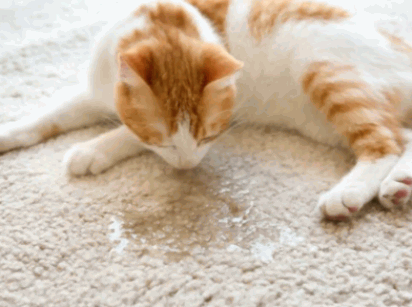
Cleaning dried cat urine from the carpet is crucial for maintaining a healthy and hygienic home environment, ensuring the welfare of both pets and their owners.
Not only does lingering cat urine odour create an unpleasant living atmosphere, but it can also lead to respiratory issues and allergies for both humans and animals. If left untreated, the ammonia in cat urine can cause carpet discolouration and deterioration over time. By promptly removing dried cat urine stains from carpets, you not only ensure a fresh-smelling home but also prevent bacteria growth and potential health hazards. This simple yet essential maintenance task contributes significantly to a clean and harmonious living space for all inhabitants.
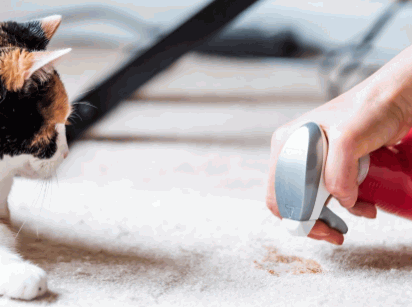
Leaving dried cat urine on carpets poses risks such as bacterial growth, persistent odour, and potential health hazards due to the unpleasant smell.
The presence of dried cat urine can provide an ideal environment for bacteria to thrive, leading to contamination that can result in respiratory issues and allergic reactions. The persistent odour from the urine can permeate the air, causing discomfort and potentially triggering headaches or nausea with prolonged exposure. This not only affects the indoor air quality but also poses risks to overall health, especially for individuals with respiratory conditions or sensitivities. Therefore, it is crucial to address and clean cat urine promptly to prevent these adverse effects.

To effectively clean dried cat urine from carpets, you will need supplies such as white vinegar, baking soda, hydrogen peroxide, dish soap, and enzymatic cleaner.
While white vinegar works to break down the urine components and neutralise the smell, baking soda is excellent for absorbing moisture and tackling lingering odours.
Hydrogen peroxide is a powerful stain remover that can lift tough marks from the carpet fibres.
The dish soap helps in cleaning the area thoroughly, while an enzymatic cleaner targets the organic compounds in the urine to eliminate both stains and odours effectively.
By combining these household products, you can create DIY solutions that are cost-effective and efficient in restoring your carpet to its pristine condition.
White vinegar is a versatile household item that can effectively clean and neutralise cat urine stains on carpets.
It's a natural and safe alternative to harsh chemicals, making it ideal for pet owners concerned about the well-being of their furry friends. The acidic nature of white vinegar helps break down the uric acid crystals in cat urine, which are the root cause of lingering odours. White vinegar's disinfectant properties can help eliminate harmful bacteria and germs present in the affected area, ensuring a thorough and hygienic cleaning process.

Bicarbonate of soda is a potent odour-absorbing agent that can help eliminate unpleasant smells caused by cat wee on carpets.
When cat wee soaks into carpets, it can leave behind a persistent and unpleasant smell that is difficult to disguise. The advantage of bicarbonate of soda lies in its ability to not only absorb but also neutralise these stubborn odours, rather than just temporarily covering them up.
By generously sprinkling bicarbonate of soda over the affected area and allowing it to sit for some time, the fine powder works its magic by absorbing the ammonia in cat wee and breaking down the odour molecules. This natural deodorising property of the bicarbonate of soda makes it a cost-effective and eco-friendly solution for dealing with pet-related odours in your home.
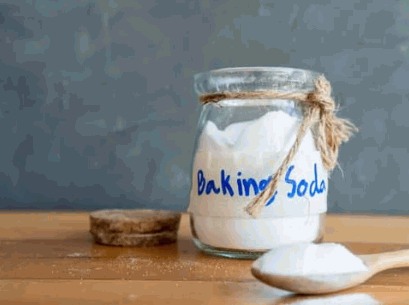
Hydrogen peroxide is a versatile cleaning agent that can effectively tackle stubborn stains left by cat urine on carpet fibres.
One of the key benefits of using hydrogen peroxide to treat cat urine stains on carpets is its ability to break down the organic residues that cause an unpleasant odour. This powerful oxidising agent can penetrate deep into the carpet fibres, lifting the stain from within and helping to restore the cleanliness of the fabric. Hydrogen peroxide is a cost-effective and readily available solution for homeowners looking to effectively address pet-related accidents.
Whether dealing with old, set-in stains or fresh spills, hydrogen peroxide offers a reliable way to freshen up your carpets and eliminate the telltale signs of pet messes.
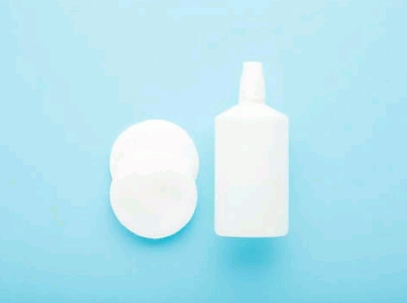
Washing-up liquid is a common household cleaning solution that can be used to create an effective cleaning mixture for removing cat urine from carpets.
When dealing with cat urine stains on carpets, the enzymes present in the cat urine can make the odours and stains particularly stubborn and challenging to remove. Washing-up liquid plays a crucial role in breaking down the oils and organic residues in the urine, making it easier to lift the stains from the carpet fibres. Its ability to effectively emulsify and lift away oily substances makes it a valuable component in creating a cleaning solution tailored to tackle cat urine stains.
By combining washing-up liquid with water and other ingredients like vinegar or bicarbonate of soda, you can create a powerful cleaning mixture that targets the source of the stain and helps eliminate both the odour and the unsightly mark left behind.
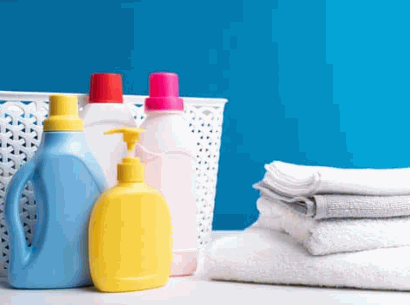
An enzymatic cleaner is a pet-friendly and effective solution for removing cat urine stains from carpets by breaking down organic compounds and eliminating odours.
This type of cleaner contains specially formulated enzymes that target the specific molecules present in cat urine, such as uric acid and urea. When these enzymes come into contact with the stains, they work to break down the chemical bonds, effectively neutralising the odour at the source. Unlike harsh chemicals that may pose a risk to pets or humans, enzymatic cleaners offer a gentle and non-toxic approach, making them a safe option for households with furry family members.
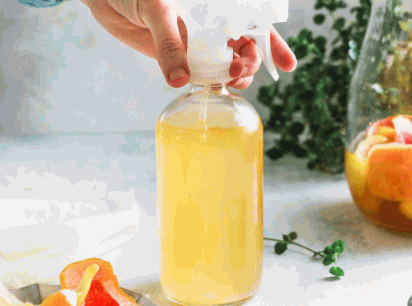
Cleaning dried cat urine from carpets involves a series of steps such as blotting the stain, preparing a cleaning solution, and applying it to the affected area.
Once you've blotted up as much of the urine as possible, it's time to mix a cleaning solution. A simple mix of equal parts water and white vinegar can be highly effective in breaking down the enzymes in cat urine.
Gently pour the solution onto the affected area, ensuring it penetrates the carpet fibers. Allow the solution to sit for at least 10-15 minutes to work its magic. For a deeper clean, consider using a carpet cleaner with an enzymatic cleaner specifically designed for pet stains.
After treating the area, rinse with cold water and blot dry with clean towels. For persistent stains, you may need to repeat the process or try commercial pet stain removers.
Explore: How To Clean Carpet Stains DIY
The first step in cleaning dried cat urine from carpets is to blot the urine stain with a clean cloth or kitchen roll to absorb as much liquid as possible.
This immediate action is crucial as blotting helps prevent the urine from spreading further into the carpet fibers and being absorbed deeply. By swiftly removing the excess moisture, you can minimise the potential for long-term damage and the lingering odor that often accompanies pet accidents.
Prompt blotting can make the subsequent cleaning process more efficient and effective, ensuring that the affected area is thoroughly treated. Taking quick and thorough action when dealing with urine stains is key to maintaining the cleanliness and freshness of your carpets.
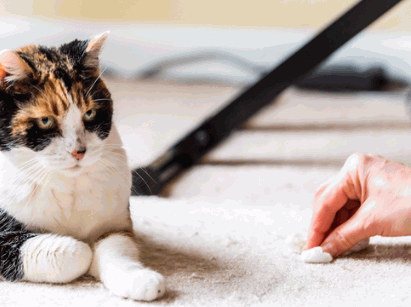
Prepare a DIY cleaning solution by mixing white vinegar, bicarbonate of soda, and water to create an effective stain-fighting remedy for dried cat urine on carpets.
Vinegar is known for its acidic properties, which help in neutralising odours while bicarbonate of soda acts as a gentle abrasive that helps in lifting stains. The combination of these two powerhouse ingredients creates a potent cleaning agent that can tackle even the toughest of messes.
To make the solution, mix equal parts of vinegar and water in a spray bottle, then sprinkle bicarbonate of soda over the affected area. Allow it to sit for a few minutes before scrubbing it with a brush or cloth. The fizzing action of the mixture will work to break down the urine compounds, leaving your carpet fresh and clean.
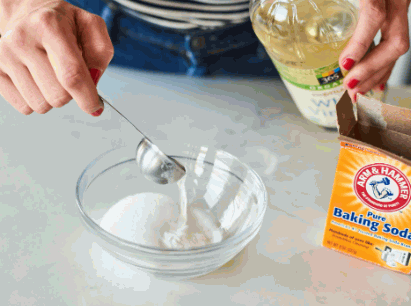
Apply the prepared cleaning solution to the dried cat urine stain on the carpet, ensuring thorough coverage of the affected area for effective odour and stain removal.
To effectively treat the urine stain, it is crucial to saturate the affected spot completely with the solution. This allows the active ingredients to penetrate deeply into the carpet fibres, reaching all layers affected by the urine. Ensuring that the solution is applied evenly helps to prevent any potential discolouration or uneven cleaning results. Leave the solution on the stain for the recommended time, as indicated on the product label, to allow it sufficient contact time to break down the urine components and eliminate the odour at its source.
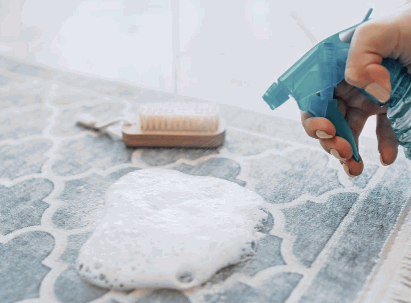
Allow the cleaning solution to sit on the dried cat urine stain, giving it time to absorb and eliminate the odour-causing compounds from the carpet fibres.
Waiting is key when dealing with urine stains. It's recommended to let the cleaning solution work its magic for at least 10-15 minutes. This waiting period allows the solution to penetrate deep into the carpet fibres, breaking down the urine residue effectively. By being patient and allowing sufficient time for the solution to work, you ensure thorough absorption and long-lasting odour elimination. This method not only tackles the stain visibly but also addresses the underlying issue by neutralising the odour at its source.
After letting the solution sit, blot the area again with a clean cloth to absorb any remaining moisture and bacteria, aiding in the drying process.
This step is crucial to ensure that the carpet is thoroughly cleaned and to expedite the drying time. By blotting the area again, you are not only removing excess moisture that could lead to mould growth but also eliminating any lingering bacteria that may cause odours or health hazards. The act of blotting helps in promoting quicker drying of the carpet fibres, preventing the formation of water stains or discolouration. It's a simple yet effective way to guarantee a fresh and sanitary carpet after a thorough cleaning session.
Rinse the cleaned area with water to remove any residue of the cleaning solution and cat urine from the carpet fibres and upholstery fabric.
This crucial rinsing step ensures that the carpet and upholstery are thoroughly cleaned, as any leftover cleaning solution or urine traces can attract dirt and cause staining over time. By flushing the area with water, you not only eliminate these potential contaminants but also help to revitalise the fabric and restore its freshness.
Without proper rinsing, the cleaning process may not be fully effective, leaving behind residues that can lead to recontamination and unpleasant odors. Rinsing aids in maintaining the appearance and longevity of your carpet and upholstery, prolonging their overall lifespan.
Dry the cleaned area thoroughly using towels or a fan to absorb excess moisture and eliminate any remaining odour from the carpet.
Properly drying the cleaned area is crucial in preventing the growth of mould and mildew, which thrive in damp environments. By ensuring that the carpet is completely dry, you not only maintain a hygienic living space but also prolong the life of your carpet.
Residual moisture can attract dirt and particles, leading to potential discolouration and unpleasant smells. A fully dried carpet will restore its cleanliness and freshness, allowing you to fully appreciate the results of your cleaning efforts.
Preventing cat urine stains on carpets involves implementing a regular cleaning schedule, using preventive measures, and addressing accidents promptly to maintain a stain-free environment.
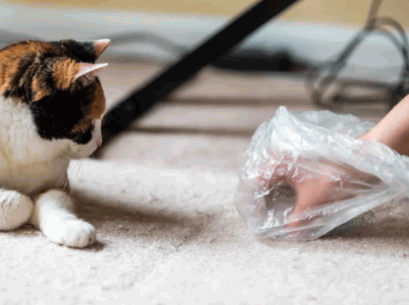
Act swiftly to clean up any cat urine accidents on carpets immediately to prevent stains, odours, and the recurrence of unwanted incidents.
Using pet-friendly cleaning solutions is crucial to effectively remove cat urine stains and odours, as traditional cleaners may contain harsh chemicals that could be harmful to pets.
By tackling the mess promptly, you not only maintain a clean environment but also discourage your cat from repeating the behaviour in the same spot.
Remember, the longer the urine sits, the more challenging it becomes to completely eliminate the smell, making quick action essential for successful cleanup.
Implement a cat urine deterrent to discourage feline companions from soiling carpets and upholstery, preventing future stains and maintaining a pet-friendly environment.
Encourage the use of a cat litter tray to provide feline companions with a designated area for urination, reducing the likelihood of accidents and preserving carpet cleanliness.
Cat litter trays serve as essential tools in maintaining a harmonious living space for both humans and their beloved pets. By establishing a specific spot for your cat to relieve itself, you not only prevent unsightly accidents on carpets but also promote a healthy hygiene routine for your furry friend. The controlled environment of a litter tray helps contain odours, making it easier to keep your home smelling fresh and clean. Regular cleaning and maintenance of the litter tray contribute to overall pet wellness and happiness.
61a, Walton St, Walton On The Hill, Tadworth,
Surrey, KT20 7RZ
info@amorybrown.co.uk